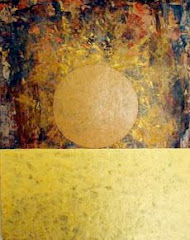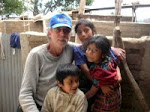I don't know if this is a posed shot or what the women are actually doing. Does it take two people to load the oven or remove the baked bread? Too bad there are not more photos of this.
Friday, May 30, 2008
Thursday, May 29, 2008
Stone Oven Hawaii
 www.konahistorical.org/
www.konahistorical.org/The oven is a recreation of the ovens that Portuguese settlers built in Hawaii.
I really like the stone theme in the base carried right over the top of the dome.
I really like the stone theme in the base carried right over the top of the dome.
Wednesday, May 28, 2008
Decorative Oven Door
For bread baking (not pizza making) an oven door is required. You could cobble something very simple together like a piece of plywood with a wet towel to protect the wood while baking, or you could have a door custom made.
pizza oven
Very nice, solid stone base. Note the metal rim around the oven opening for protection. There's a fairly large crack in the dome, but this is absolutely normal when working with mud. Even with many, many cracks, earth ovens can usually maintain their integrity. I always enjoy seeing the soot deposits on the dome. For outdoor use you generally don't need a chimney.
Earth Oven Adventure


In my opinion (since I wrote it) Earth Oven Adventure provides you with a clear template of all you need to know about constructing your own outdoor earth oven. Even those without building experience will soon be eating the very best breads and pizzas.
Preview the book here: http://stores.lulu.com/store.php?fAcctID=775822
Monday, May 26, 2008
Wattle and Daub Earth Oven


 www.bbc.co.uk/wales/
www.bbc.co.uk/wales/For as long as I can remember, I've known of the term wattle and daub construction, but it never occurred to me that ovens were often constructed this way. The above photos show the reconstruction of a medieval oven in England. The construction of earth ovens in Quebec also use the wattle and daub method (at least in the past they did), but I often wonder why a sand mold wasn't used instead. Certainly a sand mold would have been much easier to form than a wattle mold.
Zuni Ovens
 www.indiansummer.com/
www.indiansummer.com/Here are a pair of Zuni hornos. Often hornos are built in clusters of two or more. Although these ovens appear to be beat up, I suspect they produce lots of bread. The large oven openings make them very inefficient, but the Native Americans have been creating this style oven for a long time.
I've been told that when the hornos cool down, dogs frequently crawl inside to keep warm. That is a picture I would love to have.
I've been told that when the hornos cool down, dogs frequently crawl inside to keep warm. That is a picture I would love to have.
Sunday, May 25, 2008
Brick Oven
 forums.egullet.org/
forums.egullet.org/Although not an earth oven, I have to say that the oven pictured is very beautiful. Follow the link and you'll find really a lot of useful information with great photos about sourdough bread baking.
Subscribe to:
Comments (Atom)







